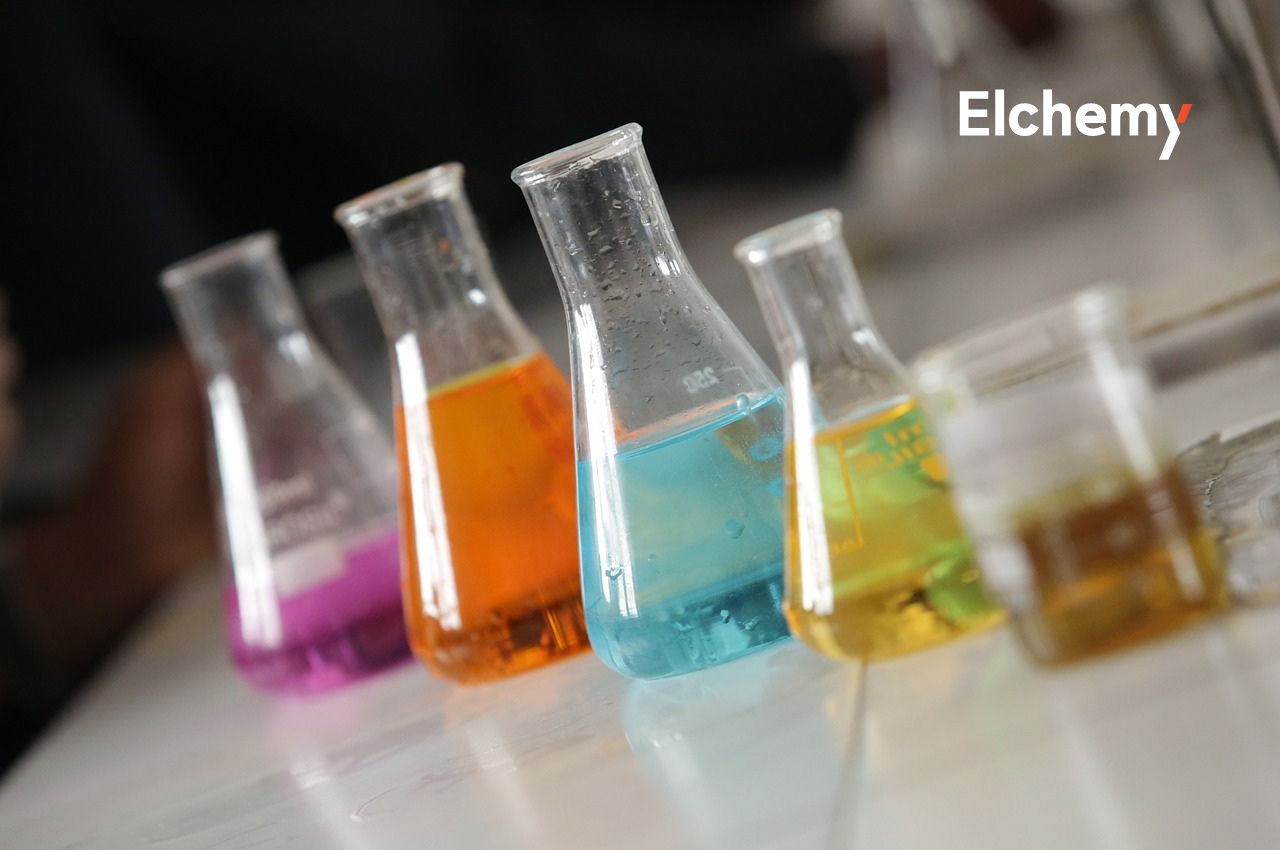According to Elchemy, the Indian specialty chemicals market is expected to rapidly grow to $40 billion by 2025, making it the fastest growing chemicals market in the world, primarily due to China’s disproportionate growth, showing great promise in terms of production capacity, product quality, and return on investment. In this article, we intend to talk about the factors responsible for driving this gigantic growth while detailing out its journey so far and its future moving forward.
Journey So Far
The performance of the Indian chemical industry has been extremely diverse and can be widely categorized into agrochemicals, petrochemicals, polymers, bulk chemicals, specialty chemicals, and fertilisers. India manufactures 16 % of the global dyestuffs and dye intermediates and is also the world’s fourth largest producer of agrochemicals after the United States, Japan, and China.
The global buyer market for specialty chemicals is about $700 to $750 billion, and India exports 4% of it, while China has roughly 15% of the market, so a major export opportunity for Indian chemical manufacturers lies in the specialty chemicals domain. An amalgamation of competitive construction costs, stringent quality practices, prolific process expertise, lower capital and manpower costs, robust intellectual property protection, and an educated pool of seasoned professionals have catapulted this growth to have lesser dependence on China for global organizations looking to diversify their supply sources. Let’s not forget the rising demand in domestic consumption.

Endless Possibilities Ahead
The Indian specialty chemicals is by large one of the most matured sectors. The past few years have witnessed a gradual shift in the fundamental business, propelled by China’s stringent environmental compliance policies and forcing sourcing managers worldwide to diversify their supply sources. The aggravating trade relationship between the United States and China is creating more opportunities for India’s chemical industry.
The chemical industry is in dire need of more than $10 billion to fund the incremental capex and working capital as manufacturers seek backward integration and set up units on a large scale.
Two marquee projects in the conception stage but talks about the endless possibilities ahead for the chemical industry are BASF’s participation in a propylene-based chemical unit in India, and Saudi Aramco’s proposed buyout of refining business of the Indian conglomerate Reliance Industries
Clariant’s acquisition of Vivimed Labs’ personal care business and investment in Privi Organics, Sanmar Chemicals and ADI Finechem, by Fairfax India, the Canadian firm Fairfax Financial Holdings further boosts confidence for the whole industry by large.
Great Investment Opportunities
- The latest developments in the global chemical industry, escalated by the pandemic, has led to more investment opportunities for foreign investors, led by Japan, Korea, and Thailand as was evident in the $210 million acquisition of SeQuent Scientific Ltd. by Carlyle and $414 million acquisition of JB Chemicals and Pharmaceuticals Ltd. by KKR respectively.
- Grasim Industries signed an agreement with Lubrizol Advanced Materials in 2020 to manufacture chlorinated polyvinyl chloride resin in Gujarat.
- Ultramarine & Pigments has commissioned a new pigments plant recently in Andhra Pradesh to manufacture pigments with a capacity of 15,000 TPA.
- Meghmani Finechem Limited is also going to expand its existing Caustic Soda Plant from 294000 TPA to 400000 TPA, and it is expected to be commissioned in Q2 FY23. MFL also recently commissioned India’s first Epichlorhydrin and CPVC plants.
- Grasim had also inaugurated a new Chlor-Alkali plant in Andhra Pradesh in April this year which has a potential to emerge as the single largest location of Chlor-Alakli production in the country with a capacity of 1,50,000 tonnes per annum.
- Fluorine major SRF has also commissioned BOPP Film Line & Metallizer at Indore with an annual production capacity of 60,000 MTPA.
India’s federal government supports the shift from China to India in a range of industries, launching a scheme to push for indigenous manufacturing of pharmaceutical active ingredients, positioning India to emerge as a competitive manufacturing hub in the years to come. It is additionally establishing plastics production parks in several states.
The road ahead
The Indian government sees the chemical industry as a key growth driver, accounting for 25% of the manufacturing sector’s GDP by 2025, therefore, allocating US$ 32.2 million to the Department of Chemicals and Petrochemicals in the Union Budget of 2021-22.
This is how the industry can hugely benefit:-
- A single point of contact for all kinds of approvals.
- Income tax exemption of 100% on export income for SEZ units for the first 5 years, 50% for the next 5 years, and 50% of ploughed-back export profit for the next 5 years.
- 100% FDI is permitted in the chemicals sector with a few exceptions.
- Implement a production-link incentive system for the agrochemical sector with 10-20% output incentives.
With such positive development, India will undoubtedly dominate the specialty chemicals market globally.



